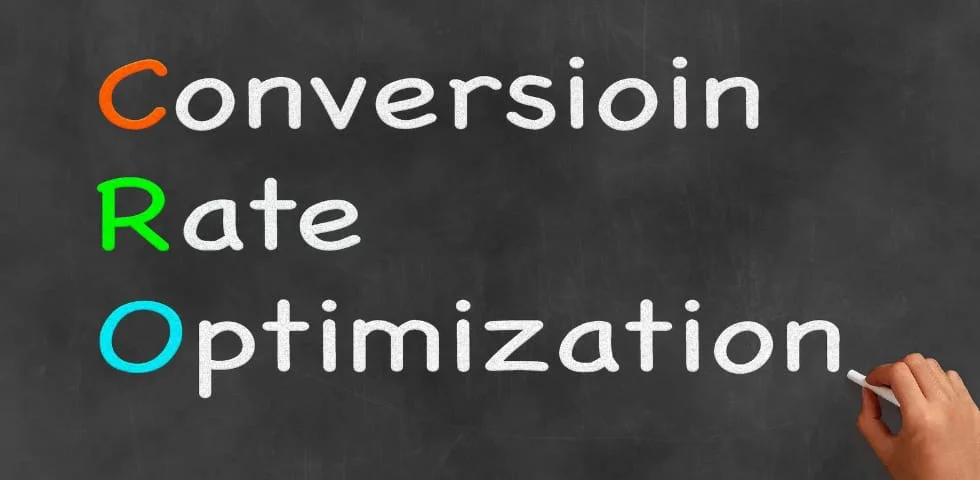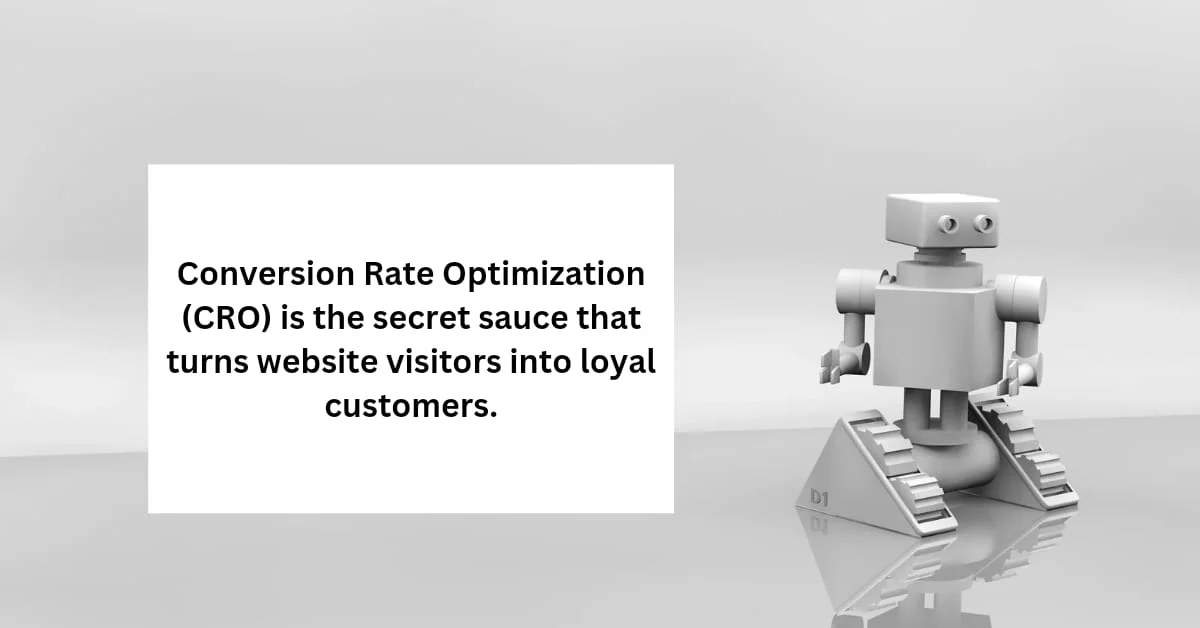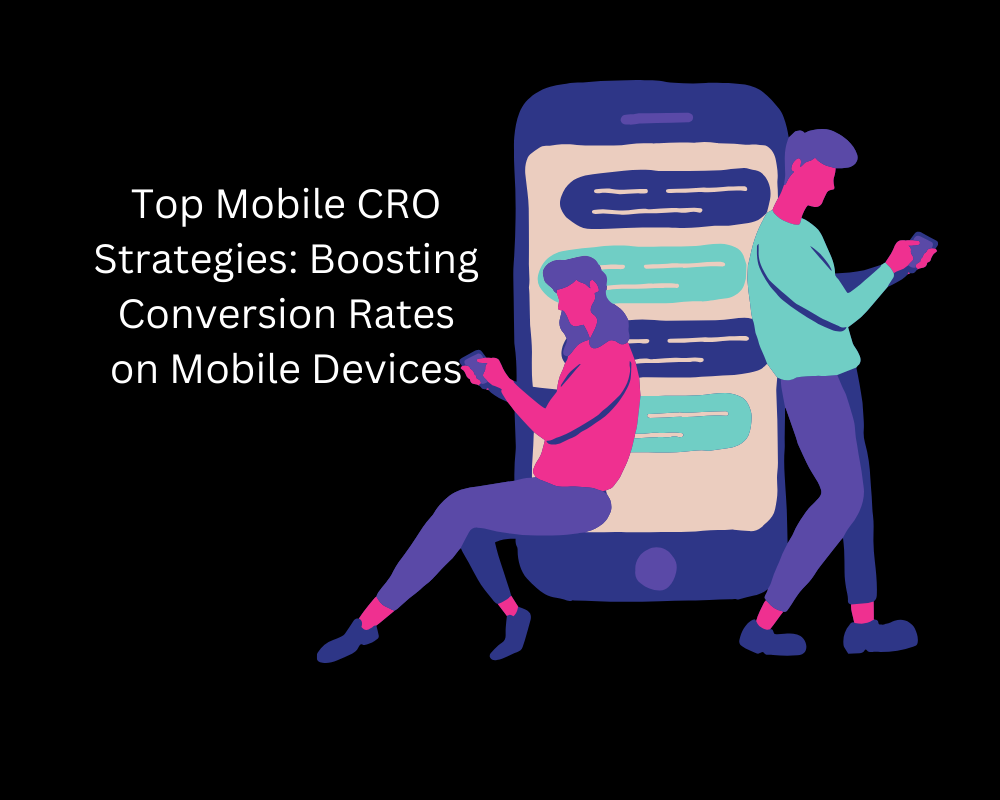Introduction
In the fast-paced digital world, where every click counts, the difference between a thriving online business and a struggling one often boils down to one critical factor: conversion rates. Whether you’re selling products, generating leads, or building a subscriber base, converting website visitors into customers is the ultimate goal. But here’s the catch—most websites fail to convert the majority of their traffic, leaving potential revenue on the table.
This is where Conversion Rate Optimization (CRO) comes into play. CRO isn’t just a buzzword; it’s a powerful strategy that can dramatically impact your bottom line. By systematically improving the elements of your website, you can turn more of your visitors into engaged customers, thereby maximizing the return on your marketing efforts.
In this post, we’ll dive deep into the most effective techniques for boosting your website’s conversion rates. From the basics of A/B testing to advanced analytics and case studies, we’ll equip you with actionable insights to help you achieve tangible results. Whether you’re a seasoned digital marketer or a business owner just starting out, this guide will provide you with the tools and knowledge you need to optimize your website for success.
Understanding Conversion Rate Optimization (CRO)

Definition and Importance of CRO
Conversion Rate Optimization (CRO) is the process of enhancing your website to increase the percentage of visitors who complete a desired action—whether that’s making a purchase, filling out a form, or subscribing to a newsletter. It’s about fine-tuning every aspect of the user experience to encourage visitors to take that crucial next step.
Why is CRO so important? In today’s digital landscape, driving traffic to your website is only half the battle. You might invest heavily in SEO, PPC, or social media marketing to attract visitors, but without effective CRO, much of that traffic could be wasted. CRO ensures that the efforts you put into bringing people to your site don’t go to waste. Instead, it helps convert these visitors into loyal customers, maximizing the return on your marketing investment.
Current Trends in CRO
The importance of CRO has grown significantly in recent years, as businesses increasingly recognize that small improvements in conversion rates can lead to substantial gains in revenue. For instance, a mere 1% increase in conversion rates can translate into thousands of dollars in additional sales, especially for e-commerce sites.
Moreover, as consumers become more sophisticated and their expectations for seamless online experiences rise, the need for effective CRO becomes even more critical. Current trends in CRO include the growing use of personalization, where content is tailored to individual user preferences, and the integration of artificial intelligence to predict user behavior and optimize conversion paths.
These trends highlight the need for businesses to stay ahead of the curve, continuously refining their CRO strategies to meet evolving customer expectations and capitalize on the latest technological advancements.
Key Techniques for CRO

A/B Testing
A/B testing is one of the most fundamental techniques in CRO. It involves creating two versions of a webpage or an element on the page—Version A and Version B—and showing them to different segments of your audience to see which one performs better. The version that leads to higher conversions becomes the winner, and you can then implement it across your site.
To run an effective A/B test, start by identifying elements that might impact user behavior. These could include headlines, images, call-to-action buttons, or even the overall layout of the page. For example, you might test different headline variations to see which one resonates more with your audience or experiment with different button colors to see which drives more clicks.
The key to successful A/B testing is to make incremental changes. Test one element at a time to accurately pinpoint what drives improvements. Over time, these small changes can add up to significant gains in conversion rates.
Improving Website Speed
Website speed is often an overlooked factor in CRO, but it’s crucial. A slow website can frustrate users and lead them to abandon your site before they’ve even had a chance to engage with your content. In fact, research shows that even a one-second delay in page load time can reduce conversions by 7%.
To optimize your site’s speed, start by evaluating its current performance using tools like Google PageSpeed Insights or GTmetrix. These tools will identify issues such as unoptimized images, excessive JavaScript, or server response times that may be slowing down your site.
Some actionable steps to improve website speed include:
- Optimizing Images: Compress images to reduce their file size without sacrificing quality.
- Leveraging Browser Caching: Store certain elements of your website on users’ browsers so that they don’t have to be reloaded with each visit.
- Minifying CSS, JavaScript, and HTML: Remove unnecessary characters from these files to reduce their size and improve load times.
By ensuring your website loads quickly, you create a smoother user experience, which can lead to higher engagement and better conversion rates.
Enhancing User Experience (UX)

A well-designed, user-friendly website is crucial for CRO. The easier it is for users to navigate your site and find what they’re looking for, the more likely they are to convert. Enhancing user experience (UX) involves making your website intuitive, accessible, and visually appealing.
Consider the following UX enhancements:
- Intuitive Navigation: Ensure your site’s navigation is clear and straightforward. Users should be able to find what they’re looking for with minimal effort. Consider implementing a simple, clean menu structure and making sure key pages are easily accessible from the homepage.
- Responsive Design: With a growing number of users accessing websites from mobile devices, a responsive design that adapts to different screen sizes is essential. A site that looks great and functions well on all devices will keep users engaged, regardless of how they access your content.
- Minimizing Friction Points: Identify and eliminate any obstacles that might hinder users from completing desired actions. This could include simplifying forms, reducing the number of steps in a checkout process, or ensuring that all buttons and links work as intended.
By focusing on UX, you can create a seamless experience that guides users smoothly towards conversion.
Creating Compelling CTAs (Call to Actions)
Your Call to Action (CTA) is the linchpin of your conversion strategy. A well-crafted CTA can guide users towards taking the desired action, whether it’s making a purchase, signing up for a newsletter, or downloading a resource.
To create compelling CTAs:
- Use Action-Oriented Language: Phrases like “Get Started Now,” “Download Your Free Guide,” or “Join Our Community” can encourage users to take immediate action. The language should be clear, direct, and aligned with the action you want users to take.
- Make Your CTAs Stand Out: Use contrasting colors to make your CTA buttons pop. Placement is also crucial; position your CTAs where they are easily visible, such as above the fold or at the end of content sections.
- Test Different Variations: Just like with A/B testing, experiment with different CTA placements, colors, and wording to see what works best for your audience.
A compelling CTA can significantly increase your conversion rates by making it clear and easy for users to take the next step.
Using Analytics for CRO

Tools for Measuring CRO
To optimize your conversion rates effectively, you need to understand how users interact with your website. This is where analytics tools come into play. They provide valuable insights into user behavior, allowing you to identify areas that need improvement.
Some of the most popular tools for measuring CRO include:
- Google Analytics: This is the go-to tool for tracking user behavior on your website. It provides detailed data on metrics such as bounce rates, session duration, and conversion rates. You can also set up goals to track specific actions, like form submissions or product purchases.
- Hotjar: Hotjar offers heatmaps, session recordings, and feedback polls that give you a visual understanding of how users interact with your website. Heatmaps show where users click, scroll, and spend the most time, helping you identify which areas of your site are most engaging or where visitors might be encountering issues.
- Optimizely: Optimizely is a powerful tool for running A/B tests and multivariate tests. It allows you to experiment with different versions of your website elements to see which ones drive higher conversions.
By using these tools, you can gather critical data on how visitors are interacting with your site and use that information to make data-driven decisions for your CRO efforts.
Analyzing Data to Improve Conversions
Once you have collected data using the tools mentioned above, the next step is to analyze it to identify areas for improvement. Here’s how you can approach this:
- Identify High-Exit Pages: Use Google Analytics to find out which pages have the highest exit rates. High-exit pages are often a sign that something on those pages is not resonating with users. Analyze these pages to see if there are any common issues, such as confusing navigation, slow load times, or unclear CTAs.
- Track User Flows: Understanding the paths users take through your site can help you identify bottlenecks in the conversion process. Google Analytics’ User Flow report shows you how users navigate from one page to another, which can reveal where users are dropping off before completing a desired action.
- Set Up Conversion Funnels: A conversion funnel is a series of steps a user takes to complete a conversion. By setting up conversion funnels in Google Analytics, you can track how many users drop off at each stage of the funnel. This helps you pinpoint exactly where users are losing interest or encountering obstacles, allowing you to focus your optimization efforts on those areas.
- Leverage Heatmaps and Session Recordings: Tools like Hotjar provide visual insights into how users interact with your pages. Heatmaps can show you which elements are getting the most attention, while session recordings allow you to watch individual user sessions to understand their behavior in real-time. These insights can be invaluable for uncovering hidden issues that might not be apparent from raw data alone.
- Conduct User Surveys and Feedback Polls: Sometimes, the best way to understand why users aren’t converting is to ask them directly. Tools like Hotjar allow you to create on-page surveys and feedback polls to gather insights directly from your audience. Ask questions like, “What stopped you from completing your purchase today?” or “What could we improve on this page?” The responses can provide actionable insights into user pain points and areas for improvement.
By systematically analyzing your data and making informed decisions based on your findings, you can continuously refine your website to boost conversions and achieve better results.
Case Studies and Examples

Successful CRO Implementations
To bring the concepts of Conversion Rate Optimization (CRO) to life, let’s explore a few real-world examples of businesses that have successfully implemented CRO strategies and seen significant improvements in their conversion rates.
Case Study 1: A/B Testing Leads to a 20% Increase in Conversions for an E-commerce Site
An e-commerce company specializing in high-end fashion products noticed that despite high traffic, their conversion rates were lower than expected. The team decided to conduct an A/B test on their product pages, focusing on the placement and wording of the call-to-action (CTA) buttons.
- Version A had the original CTA button that read “Buy Now” and was located below the product description.
- Version B featured a revised CTA that read “Add to Bag,” which was placed directly next to the product images above the fold.
After running the test for two weeks, the results were clear: Version B outperformed Version A by 20%, resulting in a significant increase in sales. The team concluded that the more prominent placement of the CTA and the more user-friendly wording made it easier for customers to take immediate action.
Key Takeaway: Small changes in CTA design and placement can have a big impact on conversion rates. Always test different variations to see what resonates best with your audience.
Case Study 2: Improving Website Speed for a SaaS Company Increases Trial Sign-Ups by 15%
A software-as-a-service (SaaS) company offering project management tools was facing a common challenge—visitors were leaving the site before signing up for a free trial. After analyzing their website speed, they discovered that slow load times were causing users to abandon the site.
The company implemented several optimizations:
- Compressed Images: Reduced the size of large images across the site.
- Minified Code: Cleaned up and minified their CSS, JavaScript, and HTML files to improve load times.
- Leveraged Browser Caching: Enabled browser caching to speed up page loading for returning visitors.
After these changes, the site’s average load time decreased by 30%, and within a month, the company saw a 15% increase in trial sign-ups.
Key Takeaway: Website speed is a critical factor in user experience and conversion rates. Ensuring your site loads quickly can reduce bounce rates and encourage users to engage more deeply with your content.
Case Study 3: Enhancing UX for a Nonprofit Organization Increases Donations by 25%
A nonprofit organization was struggling to convert website visitors into donors. They noticed that while their site attracted a significant amount of traffic, the conversion rate for donations was low. After conducting user testing, they realized that the donation process was too complicated, requiring visitors to navigate through multiple pages and fill out lengthy forms.
The organization decided to streamline the process:
- Simplified the Donation Form: Reduced the number of required fields to the essentials, such as name, email, and payment information.
- Created a One-Page Donation Process: Combined all steps of the donation process into a single page, making it easier and quicker for users to complete.
- Improved Mobile Responsiveness: Ensured that the donation page was fully optimized for mobile devices, as a significant portion of traffic came from mobile users.
As a result, the organization saw a 25% increase in donations within three months.
Key Takeaway: Simplifying user processes and ensuring a seamless experience across all devices can lead to higher conversion rates, especially for important actions like donations.
Lessons Learned
From these case studies, several key lessons emerge:
- Test Everything: Whether it’s the placement of your CTAs, the wording you use, or the speed of your website, testing is crucial. Small changes can lead to significant improvements in conversion rates.
- Prioritize User Experience: A well-designed, user-friendly website is more likely to convert visitors into customers. Focus on eliminating friction points and making it as easy as possible for users to complete desired actions.
- Speed Matters: Slow websites frustrate users and lead to higher bounce rates. Optimizing your website’s speed should be a top priority in any CRO strategy.
These examples demonstrate how effective CRO can dramatically improve your business outcomes. By applying similar strategies and continuously refining your approach, you can achieve similar success.
Common CRO Mistakes to Avoid
Even with the best intentions, businesses can sometimes make mistakes in their Conversion Rate Optimization (CRO) efforts. These errors can undermine the effectiveness of their strategies and lead to missed opportunities. Here are some common CRO mistakes to watch out for—and how to avoid them.
Mistake 1: Ignoring Mobile Users
With more people browsing and shopping on their smartphones, optimizing for mobile is no longer optional—it’s essential. However, many businesses still neglect the mobile experience, focusing their CRO efforts solely on desktop users. This oversight can lead to significant losses in potential conversions.
How to Avoid This Mistake:
- Responsive Design: Ensure your website is fully responsive, meaning it adapts smoothly to any screen size, whether desktop, tablet, or smartphone.
- Mobile-Specific Testing: Conduct A/B tests specifically for mobile users to identify and address issues that may not be present on the desktop version of your site.
- Streamline Mobile Checkout: Simplify forms, reduce the number of steps in your mobile checkout process, and ensure buttons and links are easily tappable on smaller screens.
By prioritizing mobile optimization, you can capture and convert a growing segment of your audience.
Mistake 2: Making Changes Without Testing
It’s tempting to implement changes based on intuition or anecdotal evidence, but doing so without proper testing can backfire. What you think will improve conversions might actually have the opposite effect.
How to Avoid This Mistake:
- Always A/B Test: Before rolling out any changes, conduct A/B tests to compare the performance of different versions. Let data, not gut feelings, drive your decisions.
- Iterative Changes: Make small, incremental changes and test them individually. This way, you can accurately measure their impact and avoid the risk of negative consequences.
Testing ensures that your CRO efforts are grounded in evidence, leading to more reliable and effective outcomes.
Mistake 3: Overlooking the User Journey
Focusing too much on individual elements, such as the headline or CTA button, without considering the entire user journey can lead to disjointed experiences that confuse visitors. CRO isn’t just about optimizing single elements; it’s about enhancing the overall flow that guides users from their first visit to conversion.
How to Avoid This Mistake:
- Map Out the User Journey: Visualize the path users take from landing on your site to completing a conversion. Identify any potential roadblocks or points of friction along this journey.
- Holistic Optimization: Consider how different elements of your site work together. For example, ensuring that your content aligns with the intent of your CTAs can create a more cohesive and persuasive user experience.
By optimizing the entire user journey, you’ll create a smoother path to conversion, increasing the likelihood that visitors will take the desired action.
Mistake 4: Failing to Analyze Data Regularly
CRO is not a one-time effort; it requires ongoing analysis and optimization. Some businesses make the mistake of setting up their CRO strategies and then failing to revisit them regularly. This can result in missed opportunities to adapt to changing user behaviors or market conditions.
How to Avoid This Mistake:
- Regular Data Reviews: Schedule regular reviews of your analytics data to identify trends, shifts in user behavior, or new opportunities for optimization.
- Continuous Testing: CRO should be an ongoing process. Continuously run tests and experiments to refine your strategies and stay ahead of the competition.
Staying vigilant and responsive to data will help you maintain and improve your conversion rates over time.
Mistake 5: Ignoring User Feedback
While analytics provide valuable insights, they don’t tell the whole story. Ignoring direct feedback from users can lead to missed opportunities to address specific pain points or improve the user experience.
How to Avoid This Mistake:
- Collect User Feedback: Use tools like on-site surveys, feedback forms, or even direct customer interviews to gather insights from your audience. Ask questions about their experience, what they liked, and what they found frustrating.
- Act on Feedback: Use the feedback you collect to inform your CRO strategies. Address common complaints and consider user suggestions when making improvements.
By listening to your users, you can make targeted improvements that directly address their needs, leading to higher satisfaction and better conversion rates.
The Role of SEO in CRO

SEO and CRO Synergy
Search Engine Optimization (SEO) and Conversion Rate Optimization (CRO) are often viewed as separate strategies, but in reality, they complement each other in powerful ways. While SEO focuses on driving traffic to your website, CRO ensures that this traffic is effectively converted into leads, sales, or other desired actions. When these two strategies work together, they create a synergistic effect that can significantly enhance your online performance.
How SEO Supports CRO:
- High-Quality Traffic: Effective SEO strategies bring in targeted traffic—users who are more likely to be interested in your offerings. By optimizing for the right keywords, you attract visitors who are already looking for what you offer, which increases the likelihood of conversion.
- Content Alignment: SEO often involves optimizing content to match user intent. When your content resonates with what users are searching for, they are more likely to engage with your site and convert. This alignment between user intent and content quality is crucial for both SEO and CRO success.
How CRO Supports SEO:
- Lower Bounce Rates: A well-optimized website that delivers a great user experience can reduce bounce rates, which is a positive signal for search engines. Lower bounce rates can improve your site’s search rankings, leading to more organic traffic.
- Improved User Engagement: When visitors find your website easy to navigate and your content compelling, they tend to spend more time on your site. This increased engagement can boost your SEO by signaling to search engines that your site provides valuable content.
Best Practices for Integrating SEO and CRO
To fully leverage the synergy between SEO and CRO, it’s important to integrate these strategies throughout your optimization efforts. Here are some best practices to help you do that:
Optimize for User Intent:
- Ensure that your content and keywords align with the needs and expectations of your audience. Use SEO to identify what your target audience is searching for, and then use CRO to meet those needs through effective content and calls to action.
Create High-Quality, Relevant Content:
- Content that is both SEO-friendly and conversion-focused is a powerful tool. Use SEO to drive traffic with targeted keywords, and then engage and convert that traffic with high-quality content that addresses user pain points and offers solutions.
Leverage Data for Continuous Improvement:
- Use SEO data to identify which keywords and pages are driving the most traffic. Then, apply CRO techniques to these high-traffic pages to ensure they are optimized for conversions. Regularly review your analytics to refine both your SEO and CRO strategies.
Focus on Site Speed and Mobile Optimization:
- Both SEO and CRO benefit from a fast, mobile-friendly website. Google prioritizes mobile-first indexing, and a responsive design enhances the user experience, leading to higher engagement and conversions.
Conduct A/B Testing with SEO in Mind:
- When conducting A/B tests, be mindful of how changes might affect your SEO. For instance, altering a headline for CRO purposes shouldn’t negatively impact the keyword optimization that supports your SEO efforts. Strive to find a balance that enhances both conversion rates and search engine visibility.
Conclusion on SEO and CRO Integration
Integrating SEO and CRO isn’t just about improving traffic or conversions independently—it’s about creating a holistic strategy that maximizes the effectiveness of both. By aligning your SEO efforts to drive the right kind of traffic and your CRO strategies to convert that traffic, you can achieve significant gains in your overall digital marketing performance.
This synergy between SEO and CRO ultimately leads to a more efficient and effective marketing strategy, one that not only attracts visitors but also turns them into loyal customers.
Future Trends in CRO
As digital marketing evolves, so do the strategies and tools used for Conversion Rate Optimization (CRO). Staying ahead of the curve requires keeping an eye on emerging trends that have the potential to shape the future of CRO. Here are some of the most promising trends that businesses should consider incorporating into their CRO strategies.

1. Personalization and AI-Driven Optimization
Personalization has been a buzzword for some time, but with the advent of artificial intelligence (AI) and machine learning, it’s becoming increasingly sophisticated and effective. AI-driven optimization tools can analyze vast amounts of data to deliver highly personalized experiences to users in real-time.
How Personalization Enhances CRO:
- Dynamic Content: AI can help create dynamic content that changes based on user behavior, preferences, and past interactions. For instance, an e-commerce site might display different products to different users based on their browsing history or purchase behavior.
- Predictive Analytics: AI can predict what users are likely to do next and optimize the site’s layout and content to guide them towards conversion. This can include recommending products, offering tailored discounts, or adjusting the CTA based on the user’s journey.
Implementation Tip: Start by using AI-powered tools like personalization engines that can help deliver relevant content to individual users. As AI technology advances, integrating these tools into your CRO strategy will become increasingly important.
2. The Rise of Voice Search Optimization
With the growing popularity of smart speakers and voice assistants, voice search is becoming a significant aspect of how users find information online. Optimizing for voice search is a crucial trend that will influence both SEO and CRO.
How Voice Search Impacts CRO:
- Conversational Content: Voice search queries are often more conversational and longer than traditional text-based searches. This means your content needs to be optimized for natural language and long-tail keywords that match how people speak.
- Featured Snippets: Voice search devices often read out featured snippets as answers to user queries. Ensuring your content is optimized to appear in these snippets can drive more traffic and increase conversions.
Implementation Tip: Focus on creating content that answers common questions in a clear, concise manner. Optimize for local SEO, as many voice searches are location-based, and structure your content to increase the chances of being featured in snippets.
3. Enhanced User Experience with Augmented Reality (AR) and Virtual Reality (VR)
AR and VR technologies are no longer just for gaming—they’re increasingly being used to enhance user experience in online shopping, real estate, and other industries. These technologies can provide immersive experiences that help users make more informed decisions, thereby boosting conversion rates.
How AR and VR Can Boost CRO:
- Virtual Try-Ons: E-commerce sites can use AR to allow customers to virtually try on products like clothing, accessories, or makeup before making a purchase. This reduces uncertainty and increases the likelihood of conversion.
- Immersive Product Demos: VR can be used to offer virtual tours or product demos, especially in industries like real estate or automotive. Users can explore properties or vehicles in detail from the comfort of their homes.
Implementation Tip: Consider incorporating AR or VR elements into your website if your product or service can benefit from a more immersive user experience. These technologies are particularly effective in reducing purchase hesitation and increasing user engagement.
4. Data Privacy and Ethical CRO
With growing concerns over data privacy and the implementation of regulations like GDPR and CCPA, businesses need to be more mindful of how they collect and use customer data. Ethical CRO practices are becoming increasingly important.
The Role of Data Privacy in CRO:
- Transparency and Consent: Users are becoming more cautious about how their data is used. Being transparent about data collection practices and obtaining explicit consent can build trust, which is crucial for conversions.
- Privacy-First Personalization: Businesses will need to find ways to personalize user experiences without infringing on privacy. This might involve using anonymized data or focusing on aggregate trends rather than individual behavior.
Implementation Tip: Review your data collection practices to ensure they comply with privacy regulations. Focus on building trust with your users by being clear about how their data will be used and offering value in return.
5. Continuous Optimization and Real-Time CRO
The future of CRO is moving towards continuous optimization, where businesses can make real-time adjustments to their websites based on live user data. This trend is driven by advancements in data analytics and AI.
How Real-Time CRO Works:
- Automated Testing and Adjustments: AI tools can run continuous A/B tests and automatically implement the winning variations, all in real-time. This allows businesses to optimize their sites constantly without manual intervention.
- Real-Time Personalization: As users interact with a website, AI can adjust content, CTAs, and offers in real-time to maximize the chances of conversion based on the user’s current behavior.
Implementation Tip: Invest in AI-powered CRO tools that offer real-time data analysis and automated optimization. This approach can help you stay agile and responsive to user behavior, ensuring your site is always optimized for conversions.
Conclusion
As the digital landscape continues to evolve, the importance of optimizing your website for conversions cannot be overstated. Conversion Rate Optimization (CRO) is no longer just a nice-to-have strategy—it’s a critical component of any successful online business. By systematically improving how your website engages with visitors, you can significantly enhance your ability to turn traffic into tangible results.
We’ve explored a range of techniques that can help boost your conversion rates, from the foundational practices of A/B testing and improving website speed to more advanced strategies like AI-driven personalization and leveraging augmented reality. We also examined how integrating SEO and CRO can create a powerful synergy that not only brings in more traffic but also ensures that traffic converts.
The case studies provided real-world examples of how businesses have successfully implemented these strategies, offering actionable insights you can apply to your own website. Additionally, we discussed common CRO mistakes to avoid and highlighted future trends that are set to shape the way businesses approach optimization in the coming years.
As you implement these strategies, remember that CRO is not a one-time effort but an ongoing process. Continuously analyze data, run experiments, and stay informed about the latest trends to keep your website performing at its best.Final Call to Action: Now is the time to take action. Start by applying the techniques we’ve discussed to your own website, and watch your conversion rates improve. For more expert tips on digital marketing and CRO, subscribe to our blog or reach out to us directly for personalized assistance.













